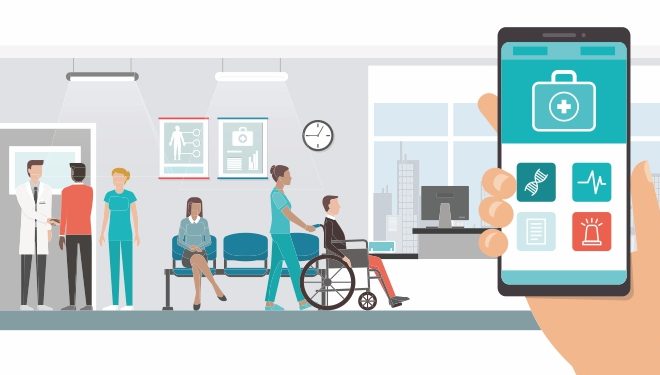The Integrations That Matter for A Hospital Management System
The healthcare industry has been a ‘hands on’ industry for the longest time. But with the information age upon us, technology has emerged as a bridge between the people and the healthcare system in order to not only be cost effective but also ensure better healthcare delivery. Healthcare providers across the globe are focused on providing top of the line medical care to their patients since patients today are not passive consumers of healthcare anymore. Patient engagement ranks high on the minds of almost all healthcare providers in an increasingly crowded marketplace. Given the scale at which hospitals operate, it becomes imperative that they now leverage technology to achieve better patient satisfaction, improve outcomes, and ensure profitability.
Hospital Management Systems have today become an integral part of the healthcare industry. Hospitals have warmed up to these Hospital Management Systems as they realize that while patient care is of foremost importance, concurrent tasks of running the hospital need to be managed with precision as well. They also need to ensure that by managing the ancillary functions, the overall effectiveness and productivity of the hospital rises incrementally. They need a full-fledged system so that all the aspects of hospital management right from administration to finance are executed smoothly and the hospital staff can function to their optimal capacity.
In order to increase efficiencies, hospitals are moving from a paper-based system that leads to time wastage and productivity derailments to Hospital Management System which is cloud-based that boost resource utilization optimally. However, in order to deliver to its true value, a Hospital Management system has to offer integrations with other departments and systems so that the entire healthcare network can be managed effectively to better patient outcomes and improve costs – while a Hospital Management System should be used to manage patient information and registrations, it should also offer integrations with other departments and systems such as finance, inventory, operations, and administration.
A comprehensive Hospital Management System should allow integrations with functions such as the Nursing Call System so that personalized alarms, vital sign surveillance, calls to escalate alarms on several levels etc. can be implemented to increase the efficiency of the staff and increase patient safety. A Hospital Management System that provides a single view of the inventory can be extremely useful when increasing efficiency of the staff. Finding out if an equipment has been purchased can be a gargantuan task if it is not a part of an easy-to-use system. Enabling the use of bar code printers and scanners makes sure that inventory management can be done more efficiently, time is not lost looking for equipment and the inventory costs remain under control.
It is essential for a Hospital Management System to provide integrations with third-party systems and equipment as well. Providing integrations with lab machines can allow lab results to be directly uploaded on the HMS. Such an integration can also allow test orders from external sources such as physicians to be sent online and the test results can be automatically uploaded on the HMS. Barcodes can also be used to track sample movement across the hospital when a particular sample has been sent for testing and ensures that sample collection and management is executed with minimal errors. This consequently enhances patient safety by reducing the risk of medical errors and increases patient satisfaction. If imaging equipment such as digital X-ray machines, cameras, sonography equipment can be integrated with the HMS then the images generated can be directly uploaded to the central server and be accessed by the doctors when they need it. Doing this also makes sure that the Electronic Health Record management of the patient remains current and up to date. Integrations with Picture Archiving and Communications System (PACS) ensures timely delivery and efficient access to medical images such as scans and x-rays and the related data.
Given that modern hospitals are complex, housing different buildings, specialty centers, labs etc. that sometimes almost mimic a mini city, it becomes vital to have an effective building management system that can be integrated with the Hospital Management System. This facilitates timely information exchange, ensures real time emergency response, improves energy and water management, enables better fire safety and thereby reduces risks and ensures regulatory compliance with ease. Integration with a Hospital Management System confirms that the entire hospital can function as a single system and operate more efficiently by allowing faster problem detection and providing immediate resolutions for the same which leads to better service delivery to patients and reduces risks associated with human errors.
Along with this, an efficient Hospital Management System should also allow for software integrations with third-party software and other technologies as well. For example, making sure that the Tally Accounting system is integrated within the Hospital Management System ensures that the billing and accounting department can operate optimally. Inter-department integrations within the umbrella of the HMS can ensure that workflows can be automated and work in a cross-functional manner to reduce workloads, increase resource efficiency and reduce time wastage. The HMS should also offer technology integrations such as digital pen handwritten prescriptions capture so that the patient EMR can be updated promptly and physicians do not waste their valuable time in time-consuming data entry.
To conclude, the Hospital Management System should provide mobile integration so that important information can be accessed and exchanged by the invested stakeholders in a safe and timely manner.
It is important to say that in a healthcare environment that is becoming increasingly complex because of the sheer dynamics of the system. A comprehensive Hospital Management System ensures that the key priorities of the hospital that directly impact patient outcomes and hospitals efficiencies are met continuously by providing an interoperable structure that is easy to use, easy to access and also provides deep insights to enable a culture of continuous improvement.




